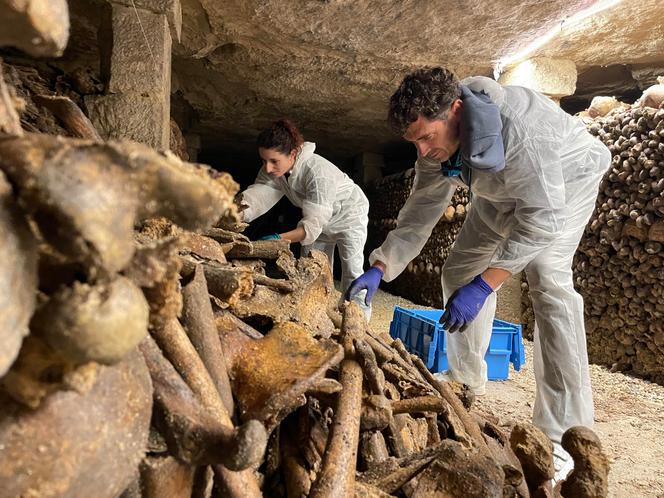


"Stop! This is the empire of death." Engraved in capital letters on a lintel at the entrance to the Paris catacombs, somewhere beneath the 14th arrondissement, this line from Virgil's Aeneid in its French translation serves as a warning to visitors. But it hasn't stopped the researchers who, since 2023, have spent two weeks each year in this dark, cold, nearly Plutonian underworld – a labyrinth of bone walls where one wanders around praying that the guiding lamp remains lit. Led by Philippe Charlier, director of the Anthropology, Archaeology, Biology Laboratory at Paris-Saclay University, these scientists aim to uncover what human remains can reveal about the health of Parisians from past centuries.
Let's go back two and a half centuries to to the time of Louis XVI, guided by Isabelle Knafou, the current administrator of the Paris catacombs. During this period, Paris was facing a series of alarming events. First of all, the ground beneath streets and buildings began collapsing due to centuries-old underground quarries. Much of the left bank's subsoil was like a gruyère of holes. In response, in 1777, the king created the Inspection Générale des Carrières ("General quarry inspectorate") – which still exists today – to map this underground world and reinforce unstable areas.
As Knafou described, the second event took place "in 1780, [when] the cemetery of the Innocents, located in the Halles district, a gigantic graveyard, cracked: decomposing corpses spilled into the surrounding cellars." A truly horrific scene. With emerging concerns about hygiene, it became urgent to empty the cemeteries. Knafou called this "the great transhumance": "The decision was made in 1785, and for 15 months, at night, with a liturgical accompaniment, huge ox-drawn carts moved the bones from Parisian cemeteries."
And put them where? They were placed in the old quarries at the southern edge of Paris, near what is now Place Denfert-Rochereau. Bones were poured down shafts and crushed 20 meters below. Over the course of the 19th century, particularly during the Haussmann building works, other "waves" of bones were deposited in what became known as the catacombs.
At the bottom of the catacombs, quarrymen arranged the remains along the cavities, forming walls called "hagues," which consist of two sections. In the front section, around 50 centimeters thick and visible to visitors, long bones (femurs, tibias, humerus) are skilfully and meticulously arranged, stacked like dry stone walls, alternating with layers of skulls. In contrast, the rear section, hidden from view, is an indescribable "mess" of smaller or broken bones that can extend several meters deep.
You have 58.5% of this article left to read. The rest is for subscribers only.
